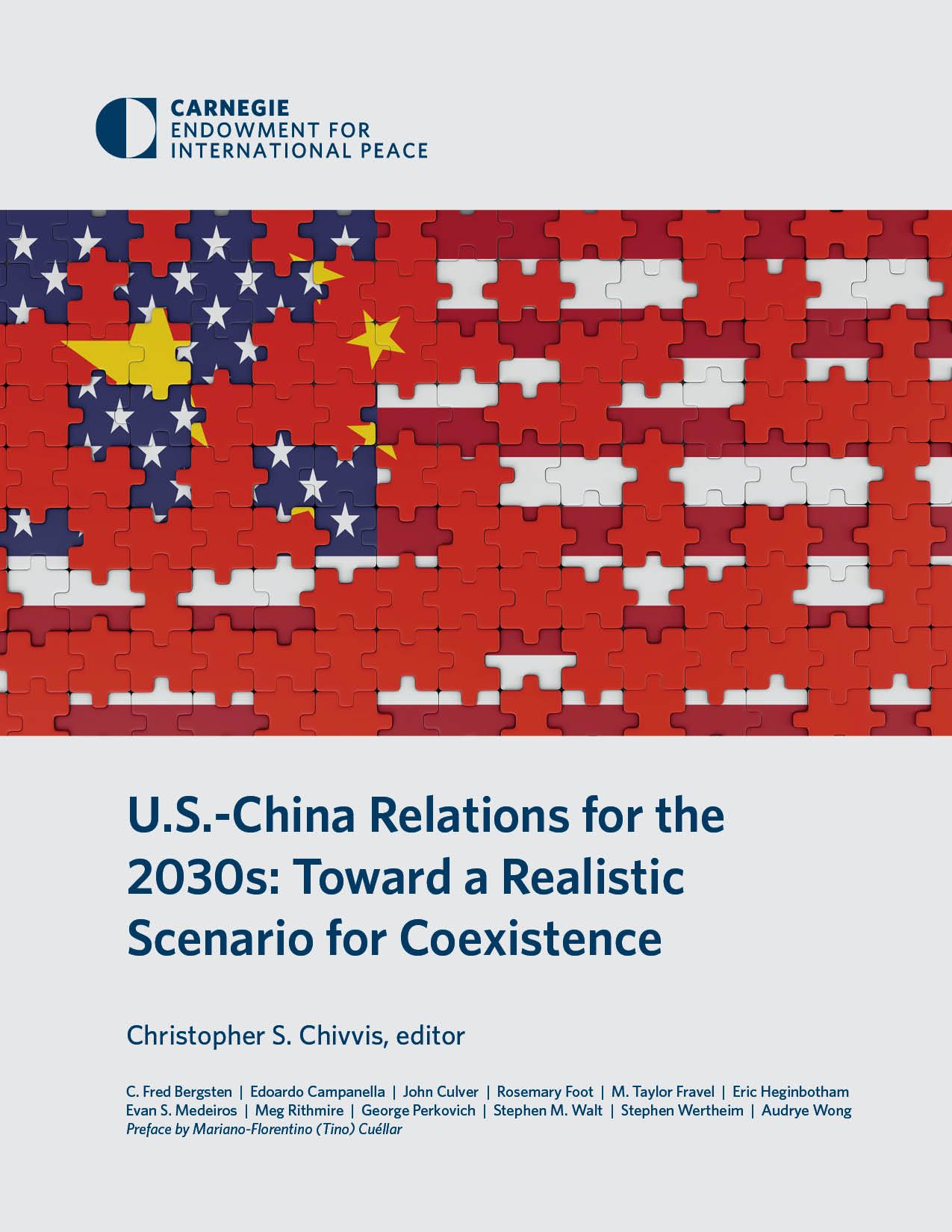Report on the Inter-American Court of Human Rights’ Advisory Opinion on the Climate Emergency and its Implications for the Sustainable Development Goals
Introduction: A Landmark Opinion Linking Climate, Human Rights, and Global Goals
On July 3, the Inter-American Court of Human Rights issued a landmark Advisory Opinion defining the climate crisis as an “emergency” requiring urgent and coordinated action. The opinion, a legal analysis requested by Chile and Colombia, establishes a comprehensive framework for state obligations regarding climate change, fundamentally linking them to human rights and the achievement of the Sustainable Development Goals (SDGs). This report analyzes the key findings of the opinion and its significant emphasis on advancing SDG 13 (Climate Action), SDG 16 (Peace, Justice and Strong Institutions), and the broader 2030 Agenda for Sustainable Development.
Foundational Legal Principles for Global Sustainability
Establishing Environmental Protection as a Peremptory Norm (Jus Cogens)
A major development within the opinion is the recognition that the obligation to prevent irreversible harm to the climate and environment constitutes a jus cogens norm. This elevates the duty to protect the environment to the highest level of international law, making it a non-derogable principle. This finding provides a powerful legal imperative for achieving key environmental SDGs.
- SDG 13 (Climate Action): By defining irreversible climate harm as a violation of a peremptory norm, the Court strengthens the legal obligation for states to pursue ambitious climate mitigation and adaptation.
- SDG 14 (Life Below Water) & SDG 15 (Life on Land): The ruling provides a robust legal basis for protecting ecosystems from irreversible damage, directly supporting the conservation of marine and terrestrial biodiversity.
- SDG 16 (Peace, Justice and Strong Institutions): This new legal status creates stronger accountability pathways to challenge state and non-state actors for actions that exacerbate climate change.
- SDG 17 (Partnerships for the Goals): It reinforces the need for global cooperation to prevent catastrophic environmental harm, urging a united front among nations.
Codifying the Right to a Healthy Climate and Recognizing Nature’s Rights
The Court introduced two critical innovations that advance a holistic and sustainable development model. It recognized the right to a healthy climate as an independent human right, essential for the enjoyment of all other rights. Furthermore, it affirmed that recognizing nature as a subject of rights is a necessary step toward achieving true sustainability. These recognitions directly support the following SDGs:
- A Right to a Healthy Climate: This establishes that a stable climate is a precondition for human well-being, reinforcing the urgency of SDG 13 (Climate Action). It creates a legal basis for individuals to demand reparations for violations, strengthening the justice component of SDG 16.
- Nature as a Subject of Rights: This ecocentric approach promotes a systemic shift towards development models that respect planetary boundaries, aligning with SDG 11 (Sustainable Cities and Communities) and SDG 12 (Responsible Consumption and Production). It provides a legal framework to protect vital ecosystems, such as the Amazon rainforest, which is critical for SDG 15 (Life on Land) and regulating the global climate.
State and Corporate Obligations for Climate Action
Mandating Enhanced Due Diligence for Climate Mitigation and Adaptation
The Court prescribed a standard of “enhanced due diligence” for all states to identify and address climate risks. This standard mandates a comprehensive, rights-based approach to climate policy, directly contributing to several SDGs.
- Science-Based Policy (SDG 13): States must define climate targets based on the best available science and create robust mitigation and adaptation plans.
- Protecting Vulnerable Groups (SDG 1 & SDG 10): The opinion requires differentiated obligations to protect vulnerable populations, including Indigenous peoples, Afro-descendant communities, and those living in poverty, thereby advancing goals on poverty eradication and reducing inequality.
- Rights-Based Processes (SDG 16): Mitigation and adaptation measures must be developed and implemented with transparency and public participation, ensuring affected communities have a voice in decision-making and access to justice.
Defining the Private Sector’s Role in Achieving SDG 13
The Court recognized the fundamental role of corporations in the climate emergency and affirmed that states must regulate their activities. This aligns with the UN Guiding Principles on Business and Human Rights and promotes corporate accountability as a key component of sustainable development.
- Corporate Accountability (SDG 12 & SDG 16): States are obligated to implement regulatory frameworks requiring corporate climate and human rights due diligence, greenhouse gas emissions disclosure, and concrete mitigation measures. This fosters responsible production patterns and strengthens institutional justice.
- Regulation of “Carbon Majors”: The call for stricter oversight on companies with high historical emissions supports a targeted approach to corporate responsibility under SDG 13.
- Transnational Accountability (SDG 17): The recommendation to allow legal accountability for parent companies based on the actions of their subsidiaries strengthens global governance and partnerships for sustainable development.
Strategic Implementation and Future Outlook
A Blueprint for Litigation and Policy Reform
The advisory opinion serves as a blueprint for policymakers and civil society to advance climate action across the Americas. Its implementation is crucial for translating international legal principles into tangible outcomes that support the 2030 Agenda. The opinion provides a normative foundation for domestic litigation and policy reform, strengthening SDG 16 by enhancing access to justice and promoting the rule of law in environmental matters.
Fostering International Cooperation and Accountability
While acknowledging past enforcement gaps, the opinion is poised to strengthen demands for greater climate ambition and accountability, particularly in international forums such as the upcoming COP30 in Brazil. It underscores the importance of SDG 17 (Partnerships for the Goals) by highlighting the need for expanded financial and technical support from wealthier nations to build state capacity for climate action. The opinion marks a significant step in embedding climate justice within international law, offering multiple pathways to accelerate state and corporate efforts to achieve SDG 13 and the broader Sustainable Development Goals.
Analysis of Sustainable Development Goals in the Article
1. Which SDGs are addressed or connected to the issues highlighted in the article?
-
SDG 13: Climate Action
- The entire article is centered on the climate crisis, which it calls an “emergency.” It discusses the legal obligations of countries to take “urgent, effective, and coordinated actions” to address climate change, which is the core mission of SDG 13.
-
SDG 16: Peace, Justice and Strong Institutions
- The article focuses on the role of international and domestic legal systems (Inter-American Court of Human Rights, ICJ, domestic litigation) in enforcing climate obligations. It discusses the development of legal norms like jus cogens, creating accountability pathways, and ensuring a rights-based approach to climate policy, all of which relate to building just and strong institutions.
-
SDG 15: Life on Land
- The article addresses the protection of ecosystems by highlighting the obligation “not to cause irreversible damage to the ecosystems that sustain life.” It explicitly mentions the potential for recognizing the Amazon rainforest as a subject of rights, directly connecting to the protection of terrestrial ecosystems.
-
SDG 17: Partnerships for the Goals
- The text emphasizes the need for international cooperation. It mentions the joint request by Chile and Colombia, the need for “sufficient support from wealthier countries,” and calls for “strong international cooperation on technology, funding, and capacity-building.” This reflects the multi-stakeholder partnership approach of SDG 17.
-
SDG 12: Responsible Consumption and Production
- The article discusses the “fundamental role” of corporations in the climate emergency. It calls for States to implement regulations like “corporate climate and human rights due diligence frameworks” and “greenhouse gas emissions disclosure regimes,” which aligns with promoting sustainable corporate practices.
-
SDG 10: Reduced Inequalities
- The analysis points out the need for “differentiated obligations for vulnerable populations, including indigenous peoples, Afro-descendant communities, children, older persons, and those living in poverty.” This directly addresses the goal of reducing inequalities by ensuring climate action does not disproportionately harm the most vulnerable.
2. What specific targets under those SDGs can be identified based on the article’s content?
-
SDG 13: Climate Action
- Target 13.2: Integrate climate change measures into national policies, strategies and planning. The article discusses translating the Court’s guidance into “concrete legal, policy, and judicial measures” and creating “progressive domestic climate frameworks.”
- Target 13.a: Implement the commitment undertaken by developed-country parties… to address the needs of developing countries. This is referenced in the call for “expanded financial support from wealthier States” to help countries in the Americas with mitigation and adaptation.
-
SDG 16: Peace, Justice and Strong Institutions
- Target 16.3: Promote the rule of law at the national and international levels and ensure equal access to justice for all. The article’s focus on using international law, advisory opinions, and “domestic litigation efforts” to create “accountability pathways” directly supports this target.
- Target 16.7: Ensure responsive, inclusive, participatory and representative decision-making at all levels. This is reflected in the demand that mitigation and adaptation measures “must be developed and implemented in participatory, transparent, and rights-based ways, ensuring that affected communities have a meaningful voice in decision-making.”
-
SDG 15: Life on Land
- Target 15.5: Take urgent and significant action to reduce the degradation of natural habitats, halt the loss of biodiversity and, by 2020, protect and prevent the extinction of threatened species. The recognition of an obligation “not to cause irreversible harm to the climate and the environment as jus cogens” is a powerful legal tool aimed at preventing such degradation.
- Target 15.9: Integrate ecosystem and biodiversity values into national and local planning, development processes, poverty reduction strategies and accounts. The proposal to recognize “nature as a subject of rights,” as was done for the Atrato River and could be for the Amazon, is a direct implementation of this target.
-
SDG 17: Partnerships for the Goals
- Target 17.9: Enhance international support for implementing effective and targeted capacity-building in developing countries. The article explicitly calls for “international cooperation on technology, funding, and capacity-building.”
- Target 17.16: Enhance the global partnership for sustainable development, complemented by multi-stakeholder partnerships. The article describes the interaction between States (Chile, Colombia), international courts, civil society, and non-State actors as a collaborative effort to advance climate action.
-
SDG 12: Responsible Consumption and Production
- Target 12.6: Encourage companies, especially large and transnational companies, to adopt sustainable practices and to integrate sustainability information into their reporting cycle. The article directly calls for States to impose “corporate climate and human rights due diligence frameworks, greenhouse gas emissions disclosure regimes, and corporate climate mitigation measures.”
-
SDG 10: Reduced Inequalities
- Target 10.3: Ensure equal opportunity and reduce inequalities of outcome, including by eliminating discriminatory laws, policies and practices and promoting appropriate legislation, policies and action in this regard. This is addressed by the Court’s recommendation for “differentiated obligations for vulnerable populations” to ensure climate justice.
3. Are there any indicators mentioned or implied in the article that can be used to measure progress towards the identified targets?
-
For SDG 13 (Climate Action):
- The establishment of “interim climate targets” and national “adaptation plans.”
- The amount of “expanded financial support from wealthier States” provided for climate action.
-
For SDG 16 (Peace, Justice and Strong Institutions):
- The number of “domestic litigation efforts” challenging practices that cause climate harm.
- The creation of participatory bodies to protect nature’s interests, such as the committee established for the “Atrato River Decision.”
-
For SDG 15 (Life on Land):
- The number of legal frameworks that recognize elements of nature (e.g., rivers, rainforests) as a “subject of rights.”
- Legal challenges to activities like the “continued deforestation of the Amazon,” which can be measured by changes in deforestation rates.
-
For SDG 17 (Partnerships for the Goals):
- The establishment of formal agreements for “international cooperation on technology, funding, and capacity-building.”
-
For SDG 12 (Responsible Consumption and Production):
- The number of States that have implemented “corporate climate and human rights due diligence frameworks.”
- The existence of “greenhouse gas emissions disclosure regimes” for corporations.
- The number of regulations allowing for “legal accountability for parent companies based on the activities of their subsidiaries.”
-
For SDG 10 (Reduced Inequalities):
- The existence of climate policies and plans that include specific, “differentiated obligations” and measures for vulnerable groups like “indigenous peoples, Afro-descendant communities, children, older persons, and those living in poverty.”
4. Table of SDGs, Targets, and Indicators
| SDGs | Targets | Indicators |
|---|---|---|
| SDG 13: Climate Action | 13.2: Integrate climate change measures into national policies, strategies and planning. | Existence of national climate mitigation targets, interim targets, and adaptation plans. |
| SDG 16: Peace, Justice and Strong Institutions | 16.3: Promote the rule of law at the national and international levels and ensure equal access to justice for all. | Number of domestic litigation efforts on climate; establishment of legal accountability pathways for climate harm. |
| SDG 15: Life on Land | 15.9: Integrate ecosystem and biodiversity values into national and local planning. | Legal recognition of ecosystems (e.g., Amazon rainforest) as a “subject of rights.” |
| SDG 17: Partnerships for the Goals | 17.9: Enhance international support for implementing effective and targeted capacity-building. | Implementation of international cooperation on technology, funding, and capacity-building; amount of financial support from wealthier states. |
| SDG 12: Responsible Consumption and Production | 12.6: Encourage companies to adopt sustainable practices and integrate sustainability information into their reporting cycle. | Number of states with corporate due diligence frameworks and greenhouse gas disclosure regimes; regulations on parent company liability. |
| SDG 10: Reduced Inequalities | 10.3: Ensure equal opportunity and reduce inequalities of outcome. | Existence of climate policies with “differentiated obligations for vulnerable populations.” |
Source: justsecurity.org







